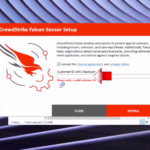Getting affordable health insurance can seem daunting, but with some research and planning, it is possible. Having health insurance protects you from unexpected medical costs and gives you access to preventive care to help keep you healthy. This guide will walk you through steps to find and get an affordable health insurance plan that meets your needs and budget.
Understand the Types of Health Insurance Plans
There are several common types of health insurance plans to choose from:
Health Maintenance Organizations (HMOs)
- You choose a primary care doctor from the plan’s network who coordinates your care.
- Referrals are required to see specialists.
- Care is only covered if you use in-network providers, except emergencies.
- Premiums tend to be lower, but networks are more limited.
Preferred Provider Organizations (PPOs)
- You pay less when using providers in the plan’s network, but can still get care from out-of-network providers for a higher cost.
- You don’t need referrals to see specialists.
- Premiums tend to be higher, but networks are broader.
Point of Service (POS)
- Combines features of HMO and PPO plans.
- You choose a primary care doctor to coordinate in-network care and referrals.
- Out-of-network care is allowed but costs more.
- Balances flexibility and lower costs.
Catastrophic Coverage
- Only covers three primary care visits per year.
- Minimal coverage until you meet the high deductible.
- Lowest premiums, but very high deductibles.
Short-Term Health Insurance
- Temporary coverage between jobs or other insurance.
- Limited benefits and exclusions.
- Low premiums, but limited coverage.
Check If You Qualify for Special Enrollment
Certain life events may qualify you for a Special Enrollment Period to sign up for health insurance outside the yearly Open Enrollment Period. Some examples:
- Losing health coverage from job or aging off parent’s plan
- Getting married or divorced
- Having a baby or adopting a child
- Moving to a new home in a new ZIP code or county
- Income changes that affect eligibility for subsidies
Talk to your state marketplace or broker to learn if a special enrollment event applies to you.
Compare Plan Costs and Coverage
When researching plans, look at these key factors to find affordable options that meet your needs:
Premiums
- Monthly amount you pay for coverage. Watch for discounts.
Deductibles
- Amount you pay out-of-pocket before insurance starts to cover costs.
Copays and Coinsurance
- Fixed fees or percentage you pay for doctor visits, prescriptions, etc.
Out-of-Pocket Maximum
- Limit on total costs you pay per year before insurance covers 100%.
Covered Services
- Make sure doctors, medications, and services you need are included.
Compare plans on your state marketplace and with private insurers to find the optimal balance of premiums and coverage.
See If You Qualify for Tax Credits and Cost Savings
Don’t assume coverage is out of reach – subsidies and programs can make insurance more affordable.
Premium Tax Credits
- Reduces monthly premium payments if household income is 100%-400% of poverty level.
Cost-Sharing Reductions
- Lowers copays and other costs if income is 100%-250% of poverty level.
Medicaid and CHIP
- Free or low-cost coverage options based on income levels in your state.
Catastrophic Plans
- Cheaper option for those under 30 or with a hardship exemption.
Use a subsidy calculator to see if you qualify for cost savings before enrolling.
Get Insured Through Your Employer, School, or Family
Many people get coverage through:
- Employer-Sponsored Insurance – Most common way to get health insurance. Some employers pay part of premiums.
- University Health Plans – Check if you can stay on parent’s plan or enroll in school plan.
- Parent’s Insurance – Children can stay on parent’s plan until age 26 in most cases.
- Spouse’s Insurance – Get added to partner’s employer plan or buy together.
- COBRA – Continue employer plan for 18-36 months after job loss. You pay full premiums.
Take advantage of these options before buying insurance on your own.
Shop on the Health Insurance Marketplace
To find and compare plans:
- Visit Healthcare.gov and enter your ZIP code.
- Browse HMOs, PPOs, and other plans in your area.
- See if you qualify for cost savings like tax credits.
- Pick a plan that fits your budget and meets your needs.
The Marketplace makes finding and enrolling in coverage easier.
Work With an Insurance Broker
For personalized help:
- Find an independent broker using referral sites like Local Healthcare.
- Discuss your specific health and financial situation.
- They can explain plan options and find discounts you qualify for.
- Brokers assist with enrollment and answering questions.
A good broker simplifies the process and makes sure you get optimal coverage.
Review Plan Details Carefully Before Enrolling
Before signing up, verify:
- Doctor, hospital, pharmacy, and other preferred providers are in-network.
- Prescriptions and medical services you need are covered.
- Premiums, copays, deductible, and maximum out-of-pocket costs fit your budget.
- Start date for coverage and when first payment is due.
- Processes for referrals, prior authorizations, out-of-network care, and appeals.
Read plans closely so there are no surprises after enrolling.
Make Sure to Pay Premiums on Time
To keep your health insurance:
- Note due date for first payment and set calendar reminders for each monthly payment.
- Sign up for auto pay through your bank or the insurer if possible.
- Follow up if you don’t receive a bill within expected timeframe.
- Contact insurer immediately if you need to request an alternate payment plan.
- Keep records of payment and follow up if there are any billing issues.
Pay premiums in full each month to avoid costly gaps in coverage.
Re-Evaluate Plans Yearly During Open Enrollment
- Open Enrollment period is once a year for marketplace plans.
- Research new plan options and costs each year.
- Update income, household, and other details that may affect subsidies.
- Consider switching plans if you can get better coverage or savings.
- Notify plan if you want to continue with current coverage.
Keep your insurance optimal by reviewing it yearly.
How to Get Affordable Health Insurance on My Parents
If you are under 26, one of the best ways to get affordable health coverage is by staying on your parent’s health insurance plan. Here are some tips:
- Talk to your parents to see if they can keep you on their plan until age 26. This is an option with most policies.
- Have your parents contact their health insurance company to add you as a dependent. Forms will need to be filled out.
- Provide documents like your birth certificate, SSN, and student status to prove you are eligible.
- Be aware of any premium costs your parents will pay for adding you. Offer to contribute if possible.
- Look into coverage specifics – some family plans have limited benefits for dependents over 18.
- At 26, you will need to transition off your parent’s insurance and find your own plan.
Taking advantage of this option makes getting insured affordable and straightforward.
Frequently Asked Questions
What are some tips for getting the best deal on health insurance?
Some tips include:
- Compare plans every year during open enrollment and switch plans if better options exist.
- Look closely at premiums, deductibles, copays, and maximum out-of-pocket costs when evaluating plans.
- Use resources like Healthcare.gov and independent brokers to find discounts and subsidies you qualify for.
- Enroll in the lowest cost plan that still provides the coverage you need.
- Consider higher deductible plans if you are generally healthy to benefit from lower premiums.
- Get on a group or family insurance plan if possible for lower rates.
Can I get affordable insurance if I am self-employed?
Yes, affordable insurance options do exist for the self-employed, such as:
- Purchasing a plan on the Health Insurance Marketplace and taking advantage of any subsidies you qualify for based on income.
- Joining a Small Business Health Options Program (SHOP) plan through Healthcare.gov if you are a small business owner.
- Looking into professional associations, churches, or non-profits that offer group plan options.
- Using a health sharing ministry which offers community-based health coverage.
- Setting up a Health Savings Account (HSA) alongside a high-deductible plan if eligible.
What should I know about COBRA coverage?
COBRA allows you to keep your employer health insurance for 18-36 months after leaving a job by paying the full premium yourself. Key points:
- You must enroll within 60 days of leaving your job or losing coverage.
- It can be expensive since you pay the total premium cost, but provides continuity.
- It’s a short-term option until you find a new plan.
- You still follow the plan’s existing rules, networks, etc.
- If you have access to another group plan like through a spouse, it may be more affordable.
Can I switch health insurance plans mid-year?
In most cases, you cannot switch marketplace health plans mid-year, unless you have a qualifying event like losing employer coverage, moving, getting married, having a child, or other special enrollment triggers. These allow you a limited window to change plans. Otherwise, open enrollment once a year is the time you can shift plans.
Are there resources if I still can’t afford insurance?
If all health insurance options remain out of financial reach, resources that can help include:
- Healthcare.gov to see if you qualify for Medicaid or CHIP coverage.
- Community health centers and free clinics for reduced cost medical care and prescriptions.
- Hospital charity assistance programs.
- Checking with doctor offices and hospitals for low-income discounts and payment plans.
- Looking into short-term limited duration health plans or health sharing programs.
- Telemedicine apps for affordable basic care and consultations.
Conclusion
Finding affordable and adequate health insurance involves effort, but taking advantage of subsidies, employer plans, family policies, tax savings programs, and consumer protections can make coverage achievable. Working with a broker provides expertise. Review plans closely and re-evaluate yearly during open enrollment. Seek out resources like Healthcare.gov, clinics, telehealth, and hospital charity care if challenges remain. With persistence and creativity, quality insurance at a reasonable price is possible.










